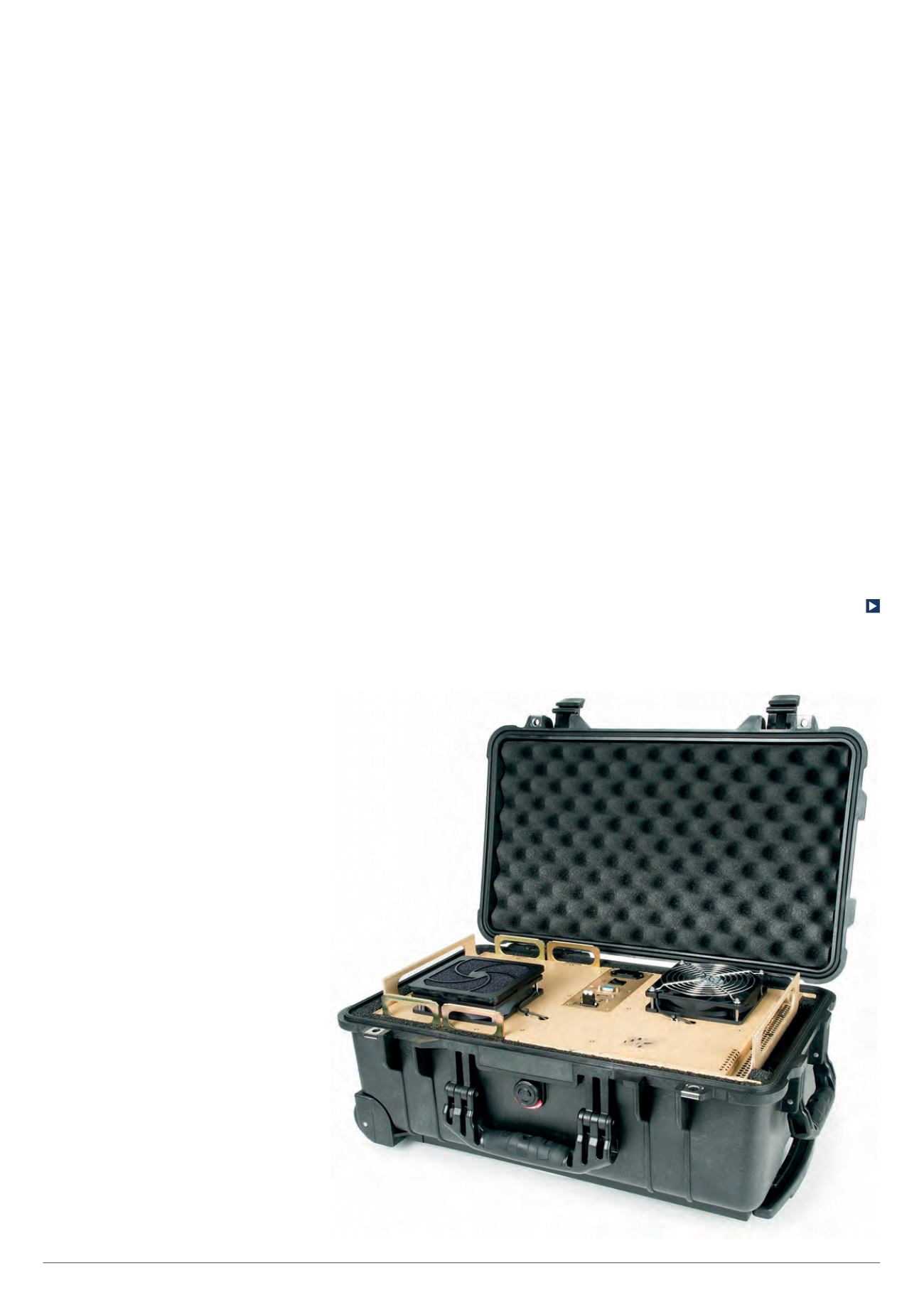

39
processor of the GCS to coordinate
the activities of UAVs in the air and
systems on the ground, all delivering
consistent sensor data back to the
operator. When this is coupled with a
connection to the cloud, the operator
can be coordinating the swarm of craft
from anywhere in the world.
Military systems
All of this is for commercial operators. For
large government and military systems
the GCS can have quite different comms
requirements, and this in turn leads to
very different implementations.
Like commercial GCS designs, these
systems use a PC motherboard, although
they are high-reliability boards with a long
lifetime – up to 15 years – and so do not
use the latest processors. Many of the
systems are mounted in vehicles or in a
fixed location where power delivery is not
an issue, as it is provided by the site or a
vehicle’s battery, which can be 24 or 48 V
depending on the age of the vehicle.
The comms systems are clearly defined
and fixed so there is no need for a
flexible interface; however, there is still a
need for custom boards. For example,
the F-35 fighter jet can be controlled
remotely while on the ground to collect
data from systems on the aircraft, and this
is handled over a dedicated 1553 board
in a PC form factor that has been added
to the GCS. The boards for the GCS are
mounted in a standard 19 in rack and
communicate over a passive backplane.
No wireless
For security reasons, none of these systems
use wireless links such as wi-fi, and USB
ports are disabled to prevent memory sticks
from introducing malware or unauthorised
copying of data. This is leading to a new
way of interfacing with the GCS via a
tethered tablet which acts as a ‘zero client’.
Essentially it is just a screen; all the
data is stored in the GCS and the
operator logs on via the tablet. It is
connected by an Ethernet cable for some
portability, and to power the tablet using
Power-over-Ethernet technology. That
means the tablet’s power consumption
has to be less than 15 W. While it has
USB ports for a keyboard and mouse,
nothing can be stored on the unit or
copied from it.
Data deluge
High-end unmanned military systems such
as Reaper and Predator use cameras
that generate vast amounts of data. In the
case of the latest Gorgon Stare and Argus
IS cameras for example, this runs into
terabytes, which has to be captured by the
GCS and delivered for analysis.
The Gorgon Stare is a wide-area
airborne surveillance two-pod camera
system: one pod has five optical cameras
each generating 16 megapixels/frame,
while the other has four infrared cameras.
The data from these is combined and
sent back to the ground station.
The successor to the Gorgon Stare,
the Argus IS, consists of 358 separate
cellphone cameras, each with 5
megapixels, creating an array of 1.8
billion pixels. Streams from groups of
the sensors can track up to 65 targets
selected by the ground station, but all the
data collected is stored in the aircraft for
later analysis.
The solution to handling the large
amounts of data generated by the
cameras has been to develop a transit
case that can store up to 65 Tbytes of
data. It comes with its own PC board
and fibre-optic comms power
conditioning power supply to handle up
to 600 Gbyte/s of data securely without
having to move the data into the cloud.
Conclusion
Ground control systems cover a wide range
of applications but have many common
elements. Rugged, long-lifetime PC systems
are at their heart, and mostly use Windows
7 to provide a common platform for
Unmanned Systems Technology
| June/July 2016
Ground control systems
|
Focus
Handling 65 Tbytes of data securely from a ground station
requires a dedicated transit case (Courtesy of Chassis Plan)









